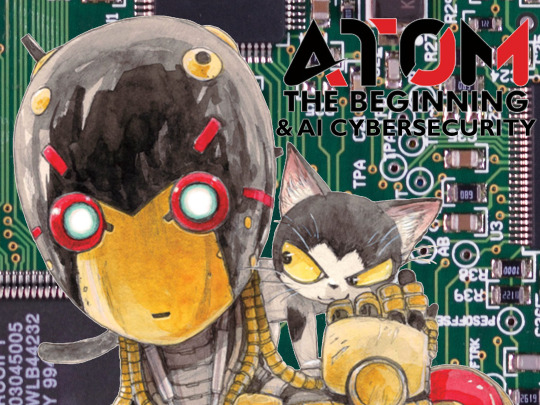#Data Input Outsourcing
Explore tagged Tumblr posts
Text
5 Major Benefits Of Outsourcing Data Input Services

Businesses continuously seek methods to improve overall efficiency and streamline their operations in the ever-changing corporate landscape. Outsourcing data input services is one technique that has grown in favor recently. Businesses can focus on their core strengths and gain advantages by assigning data-related work to specialist service providers. This blog post will look at the five main advantages of outsourcing data input services.
Understanding Data Input Services
Data input refers to collecting data from a variety of sources, such as digital and creating catalogs, or it may also entail conducting online research. Businesses have to collect data according to their needs and use it to enhance corporate growth, as an abundance of data is being contributed to the digital environment every second. Thus, one of the most in-demand services in the modern world is data input. This is due to two factors: First of all, numerous businesses lack the continuous time and focus needed for data entry.
The process of entering, updating, or verifying data into a system or database is the focus of data entry services. A vast variety of data, including client information, financial transactions, inventory records, survey results, and more, may be included in this. Ensuring that timely, accurate, and full data is entered into a system for various business purposes is the aim of data input services.
Why Should We Go For Outsourcing Data Input Services?
When you outsource the data input services, it gives you the leverage to spend your quality time in other core business areas and reduce your data management costs along with infrastructure costs. Second, you also can manage your data efficiently with expert help.
Businesses often outsource data input services to specialized providers to streamline Business processes and ensure efficiency. Outsourcing can be particularly beneficial for time-consuming tasks and require attention to detail, allowing organizations to focus on their core competencies while the outsourced service providers handle the data-related tasks.
Categories Of Outsourcing Data Input Services
Data input from paper documents/document data entry
Data input from web-based applications
Data input from forms/resumes
Data input from client software/application
Data input from catalog/catalog data entry
Data input from business cards
Data input from OCR
Data enumeration/data keying/data capturing
Data input from images/image data entry
Data input from one file format to others
Let's Explore The 5 Major Benefits Of Outsourcing Data Input Services
By entrusting data-related tasks to specialized service providers, businesses can focus on their core competencies and achieve significant advantages. Here, we will discuss about five major benefits of outsourcing data input services:
1. Cost Savings:
Businesses can save a lot of money by outsourcing data input services. By leveraging the expertise of external service providers, companies can avoid the expenses associated with hiring and training in-house staff.
Additionally, outsourcing eliminates the need for investing in infrastructure, technology, and ongoing maintenance. This cost-effective approach enables organizations to allocate resources more efficiently and redirect funds toward critical business functions.
Without committing to a long-term agreement, you can scale up or down your use of outsourced services and simply pay for the task completed.
2. Access To Specialized Skills And Technology:
Expert outsourcing partners frequently have cutting-edge technology and specialized knowledge specifically devoted to data input services. These suppliers make sure that your data processes take advantage of state-of-the-art solutions by keeping up with the most recent developments in the industry.
By tapping into this expertise, businesses can improve the accuracy, speed, and quality of their data input processes without the need for continuous in-house training and technology investments.
Accounting data entry services are the area of expertise for outsourcing providers, who also possess the necessary skills and experience to manage extensive financial transactions.
3. Increased Efficiency And Flexibility:
Outsourcing data input services offers unparalleled scalability and flexibility. Businesses can easily adjust the level of services based on their fluctuating needs. Whether there is a sudden increase in data volume or a temporary decrease in workload, outsourcing provides the agility to scale services up or down accordingly. This flexibility ensures that companies maintain optimal efficiency without being burdened by unnecessary overhead costs during slow periods.
Outsourcing can lead to faster turnaround times for tasks like product catalog updates, order processing, and data quality control.
Online data entry services can lead to faster, more efficient, and improved database management.
4. Risk Mitigation And Data Confidentiality:
In the present digital era, data security is of utmost importance to companies. Reputable suppliers' data input services frequently include integrated security features and regulatory requirements. Strong security measures are put in place by seasoned outsourcing partners to safeguard private data and lower the possibility of hacking.
Additionally, these providers regularly update their systems to stay compliant with industry regulations, offering businesses peace of mind regarding data security and privacy.
Data security and privacy are given top attention by Indian outsourcing businesses, and employees are required to maintain high data security under the Non-Disclosure Agreement (NDA).
5. Focus On Core Competencies:
Collecting data takes a lot of time and might take focus and resources away from a business's primary strengths. Businesses can focus on their main goals, such as product development, marketing, and customer support, by outsourcing data input services. Organizations can improve their overall productivity and strategic focus by assigning regular data work to others.
Conclusion:
In conclusion, outsourcing data input services is a strategic move for businesses looking to enhance efficiency, reduce costs, and stay focused on core competencies. By partnering with specialized service providers, organizations can leverage expertise, access advanced technologies, and ensure scalability while mitigating risks associated with data security. In the dynamic business landscape, outsourcing data input services emerges as a valuable solution for companies seeking a competitive edge and sustainable growth.
Source Of: https://dataentrywiki.blogspot.com/2024/02/5-major-benefits-of-outsourcing-data-input-services.html
#Data Input#Data Input Companies#Data Input Operator#Data Input Outsourcing#Data Input Services#Data Input Specialist
0 notes
Text
There's a nuance to the Amazon AI checkout story that gets missed.

Because AI-assisted checkouts on its own isn't a bad thing:

This was a big story in 2022, about a bread-checkout system in Japan that turned out to be applicable in checking for cancer cells in sample slides.
But that bonus anti-cancer discovery isn't the subject here, the actual bread-checkout system is. That checkout system worked, because it wasn't designed with the intent of making the checkout cashier obsolete, rather, it was there to solve a real problem: it's hard to tell pastry apart at a glance, and the customers didn't like their bread with a plastic-wrapping and they didn't like the cashiers handling the bread to count loaves.
So they trained the system intentionally, under controlled circumstances, before testing and launching the tech. The robot does what it's good at, and it doesn't need to be omniscient because it's a tool, not a replacement worker.
Amazon, however, wanted to offload its training not just on an underpaid overseas staff, but on the customers themselves. And they wanted it out NOW so they could brag to shareholders about this new tech before the tech even worked. And they wanted it to replace a person, but not just the cashier. There were dreams of a world where you can't shoplift because you'd get billed anyway dancing in the investor's heads.
Only, it's one thing to make a robot that helps cooperative humans count bread, and it's another to try and make one that can thwart the ingenuity of hungry people.
The foreign workers performing the checkouts are actually supposed to be training the models. A lot of reports gloss over this in an effort to present the efforts as an outsourcing Mechanical Turk but that's really a side-effect. These models all work on datasets, and the only place you get a dataset of "this visual/sensor input=this purchase" is if someone is cataloging a dataset correlating the two...
Which Amazon could have done by simply putting the sensor system in place and correlating the purchase data from the cashiers with the sensor tracking of the customer. Just do that for as long as you need to build the dataset and test it by having it predict and compare in the background until you reach your preferred ratio. If it fails, you have a ton of market research data as a consolation prize.
But that could take months or years and you don't get to pump your stock until it works, and you don't get to outsource your cashiers while pretending you've made Westworld work.
This way, even though Amazon takes a little bit of a PR bloody nose, they still have the benefit of any stock increase this already produced, the shareholders got their dividends.
Which I suppose is a lot of words to say:

#amazon AI#ai discourse#amazon just walk out#just walk out#the only thing that grows forever is cancer#capitalism#amazon
148 notes
·
View notes
Text
gotta say, the revelation that Murderbot is apparently completely incapable of creativity or 'making new things from gathered data' and that Murderbot and ART are 'nothing more than fancy generative AI who can't replace human workers in the arts and creative fields and they're only good for physical work' absolutely KILLED any enthusiasm I had for continuing to read the Muderbot Diaries series.
"The things that [humans in the Murderbot Diaries series] are not outsourcing (to robots) is scientific research; the development of their media, storytelling, acting, music, writing, all the artistic work involved in entertainment, anything involving creativity. Murderbot makes this point, which you mentioned, that it is humans who create the entertainment feeds, and humans who invented the cubicles that SecUnits use to repair themselves. The bots in the story are not at the level where they could duplicate that creativity or the ability to take the information gathered by the bots during research and use it to inform theories about what is going on and what it means."
My dream for Murderbot's emotional journey over the course of the series would have been for Murderbot to (slowly) fully embracing that it is a person with inherent value who is not disposable, and over the course of that journey realizing that it is not bound to just consuming media, but that it can actually create and write and direct its own shows and stories to share them with the world.
The 'documentary' in book seven could have been its first forays into a creative field, and if it was something with actual emotional weight and meaning that we got to see, instead of a background side quest we don't even get to experience, that could have been the start of its journey into realizing it is not satisfied with simply watching shows, it now wants to write its own and make its own stories!
Maybe it would start with simply making edits of existing media, grabbing a character from a show in one scene and editing them into a scenery from another show and interacting with a bunch of characters from other shows and movies (like gifset edits and such here on Tumblr from fans making crossovers) until someone see's Murderbot's show edit and are really impressed with its writing and framing and ask it if it has considered writing a script and submitting it to the local play contest on Preservation, and after some back and forth and self-doubt, Murderbot takes the plunge, submits a script, and manages to win the competition, and the short story follows along as Murderbot watches the play and sees how real people are able to add in so many more emotions and expressions to the characters when its not just using a pre-existing character, and from there it slowly starts spending more time creating and writing and directing shows, movies and especially plays than it does on defensive-contract work until time passes and Murderbot realizes its been a full year since it last took on a job that put it in the line of fire, and its the happiest it has ever been.
But that will never happen, because apparently Murderbot and ART and any other bot characters are all just apparently generative ai who are incapable of creativity, so despite making Murderbot be a character who loves loves loves media and shows, it will literally never ever be able to create anything in its life without a human providing all the creative input even though Murderbot is a cyborg/android who has enough human parts it literally has a full expressive face, hair, and human body with brain tissue with an unspecified amount of technological additions that somehow make it separate from a full human being, the distinctions between will never be fully explored considering its been 7 books.
But yeah, If you're going into the Murderbot Diaries and you're waiting like I was for Murderbot to realize it is a person who can express its own agency in life by setting out to create its own stories instead of endlessly, mindlessly consuming them, don't bother because Murderbot is apparently just a Generative AI who's incapable of creativity who is not a Person in any capacity, because apparently only humans are worth being 'People' in this setting, considering just how many fellow slaves Murderbot goes out of its way to kill instead of helping.
(I have no spoons for dealing with people trying to 'refute' this, if you're gonna argue with this post in any way just don't interact and block me instead. Making a robot character in a scifi setting who escapes slavery only to literally never give a fuck about other slaves and never actually achieves actual personhood because it is bound by its inhumanity into being inherently inferior to humans because its just generative AI dressed up in a human-like body is not a hot fucking take. I started reading these books to see how Murderbot would go on to start a slave rebellion and save its fellow SecUnits and other bots, learning to care about other people on the way, and that's clearly not the goal of this series)
17 notes
·
View notes
Text
In February 2022, Sama and OpenAI’s relationship briefly deepened, only to falter. That month, Sama began pilot work for a separate project for OpenAI: collecting sexual and violent images—some of them illegal under U.S. law—to deliver to OpenAI. The work of labeling images appears to be unrelated to ChatGPT. In a statement, an OpenAI spokesperson did not specify the purpose of the images the company sought from Sama, but said labeling harmful images was “a necessary step” in making its AI tools safer. (OpenAI also builds image-generation technology.) In February, according to one billing document reviewed by TIME, Sama delivered OpenAI a sample batch of 1,400 images. Some of those images were categorized as “C4”—OpenAI’s internal label denoting child sexual abuse—according to the document. Also included in the batch were “C3” images (including bestiality, rape, and sexual slavery,) and “V3” images depicting graphic detail of death, violence or serious physical injury, according to the billing document. OpenAI paid Sama a total of $787.50 for collecting the images, the document shows.
Within weeks, Sama had canceled all its work for OpenAI—eight months earlier than agreed in the contracts. The outsourcing company said in a statement that its agreement to collect images for OpenAI did not include any reference to illegal content, and it was only after the work had begun that OpenAI sent “additional instructions” referring to “some illegal categories.” “The East Africa team raised concerns to our executives right away. Sama immediately ended the image classification pilot and gave notice that we would cancel all remaining [projects] with OpenAI,” a Sama spokesperson said. “The individuals working with the client did not vet the request through the proper channels. After a review of the situation, individuals were terminated and new sales vetting policies and guardrails were put in place.”
In a statement, OpenAI confirmed that it had received 1,400 images from Sama that “included, but were not limited to, C4, C3, C2, V3, V2, and V1 images.” In a followup statement, the company said: “We engaged Sama as part of our ongoing work to create safer AI systems and prevent harmful outputs. We never intended for any content in the C4 category to be collected. This content is not needed as an input to our pretraining filters and we instruct our employees to actively avoid it. As soon as Sama told us they had attempted to collect content in this category, we clarified that there had been a miscommunication and that we didn’t want that content. And after realizing that there had been a miscommunication, we did not open or view the content in question — so we cannot confirm if it contained images in the C4 category.”
...
But the need for humans to label data for AI systems remains, at least for now. “They’re impressive, but ChatGPT and other generative models are not magic – they rely on massive supply chains of human labor and scraped data, much of which is unattributed and used without consent,” Andrew Strait, an AI ethicist, recently wrote on Twitter. “These are serious, foundational problems that I do not see OpenAI addressing.”
#angel posts#angel reads#AI#i dont doubt for a second that OpenAI asked for the C4 images and backpedaled when it blew up in their faces#never just believe what a spokesperson says about anything esp not a corproation as opaque as this one
8 notes
·
View notes
Text
Actually I use AI.
And I don't even think it's that bad:
I don't have access to therapy (it's expensive and I can't ask my parents that money).
Sometimes when I really need to talk about something and I feel alone and I know that my friends and family can't understand me or help me in a useful way (like the way a therapist would) I open ChatGPT and ask it advice.
No, it does not use my data for training, I didn't gave access to memorization and personalization of my input, every chat is a reset.
And no, I am not using a chatbot to replace human connection, I still talk to friends, I just don't want to drop onto friends the whole weight of everything I am feeling, I let them see what they can handle, and ask for closeness and love, I don't ask them to fix my issues.
I also use it for university.
I don't make it write my essays, but I do ask it to check for typos when I am finished writing because I can't see them, when I re read my work it plays in my head because I have it memorized and I cannot notice if the word I carefully picked has a random x in the middle of it.
And last month I had a very specific idea in the back of my mind, an idea that I came up with, with my own thinking, and I was looking for academic sources to back it up, but I didn't know if there are any sources and I had been exploring on google scholar for an hour. The last string before giving up and acting as if I invented that idea, was to ask ChatGPT if there is something similar in the literature.
Turnes out there is. And I was just lacking the key words for a concept I didn't know was actually researched.
You can't convince me that these are "lacking critical thinking" or "outsourcing my brain's work", these are new tools for things we weren't able to do before AI.
If I didn't have access to it, I would not be better off. I would simply be out of therapy without any tool for coping. I would simply have written a stupid essay because I wasn't able to find the sources.
Telling everyone that AI is always evil and they should never even touch it, will NEVER work.
Like with every issue, every technology, the challenge is to get people to use it responsibly.
5 notes
·
View notes
Text
Atom: The Beginning & AI Cybersecurity

Atom: The Beginning is a manga about two researchers creating advanced robotic AI systems, such as unit A106. Their breakthrough is the Bewusstein (Translation: awareness) system, which aims to give robots a "heart", or a kind of empathy. In volume 2, A106, or Atom, manages to "beat" the highly advanced robot Mars in a fight using a highly abstracted machine language over WiFi to persuade it to stop.

This may be fiction, but it has parallels with current AI development in the use of specific commands to over-run safety guides. This has been demonstrated in GPT models, such as ChatGPT, where users are able to subvert models to get them to output "banned" information by "pretending" to be another AI system, or other means.
There are parallels to Atom, in a sense with users effectively "persuading" the system to empathise. In reality, this is the consequence of training Large Language Models (LLM's) on relatively un-sorted input data. Until recent guardrail placed by OpenAI there were no commands to "stop" the AI from pretending to be an AI from being a human who COULD perform these actions.
As one research paper put it:
"Such attacks can result in erroneous outputs, model-generated hate speech, and the exposure of users’ sensitive information." Branch, et al. 2022

There are, however, more deliberately malicious actions which AI developers can take to introduce backdoors.
In Atom, Volume 4, Atom faces off against Ivan - a Russian military robot. Ivan, however, has been programmed with data collected from the fight between Mars and Atom.

What the human researchers in the manga didn't realise, was the code transmissions were a kind of highly abstracted machine level conversation. Regardless, the "anti-viral" commands were implemented into Ivan and, as a result, Ivan parrots the words Atom used back to it, causing Atom to deliberately hold back.

In AI cybersecurity terms, this is effectively an AI-on-AI prompt injection attack. Attempting to use the words of the AI against itself to perform malicious acts. Not only can this occur, but AI creators can plant "backdoor commands" into AI systems on creation, where a specific set of inputs can activate functionality hidden to regular users.

This is a key security issue for any company training AI systems, and has led many to reconsider outsourcing AI training of potential high-risk AI systems. Researchers, such as Shafi Goldwasser at UC Berkley are at the cutting edge of this research, doing work compared to the key encryption standards and algorithms research of the 1950s and 60s which have led to today's modern world of highly secure online transactions and messaging services.
From returning database entries, to controlling applied hardware, it is key that these dangers are fully understood on a deep mathematical, logical, basis or else we face the dangerous prospect of future AI systems which can be turned against users.
As AI further develops as a field, these kinds of attacks will need to be prevented, or mitigated against, to ensure the safety of systems that people interact with.
References:
Twitter pranksters derail GPT-3 bot with newly discovered “prompt injection” hack - Ars Technica (16/09/2023)
EVALUATING THE SUSCEPTIBILITY OF PRE-TRAINED LANGUAGE MODELS VIA HANDCRAFTED ADVERSARIAL EXAMPLES - Hezekiah Branch et. al, 2022 Funded by Preamble
In Neural Networks, Unbreakable Locks Can Hide Invisible Doors - Quanta Magazine (02/03/2023)
Planting Undetectable Backdoors in Machine Learning Models - Shafi Goldwasser et.al, UC Berkeley, 2022
#ai research#ai#artificial intelligence#atom the beginning#ozuka tezuka#cybersecurity#a106#atom: the beginning
19 notes
·
View notes
Text
Oh BABY I'm sensing a theme in this Sumeru archon quest line tonight, and it's Performance:
Performance as artistic expression via Nilou's dance, a public display which the intellect-obsessed Akademiya goes on to ban because they don't believe the arts possess as much intellectual value as data-driven research and logical deductions. This institution claims to value knowledge and yet they censor knowledge that they deem to be lesser: how shortsighted.
Performance as petty one-upmanship among the ranks of Akademiya scholars. Alhaitham doesn't have to come up with an excuse for his sudden return—he simply implies that he's here for a reason and challenges the scholar blocking his way to deduce why. It fuckin works. The guy takes Alhaitham's premise as fact, comes up with a neat little story that connects the dots, and moves on, satisfied with their baseless conclusion.
Performance as a messy act of simultaneous lie-truth: deception deployed to further a righteous cause. Many scholars have given in to the temptation to gain divine knowledge, losing their minds in the process. Alhaitham fakes the symptoms of this madness, successfully swapping a real knowledge capsule for one that he tainted with faulty data. The tainted capsule gets fed to the Akasha (the big AI in the sky that runs the city), which feeds that faulty data back to the Akademiya scholars, who accept the Akasha's input without question.
This is how the good guys pull off their plan to loosen the iron grip of the Akademiya: play into the scholar's assumptions and covertly subvert them. Use their unshakable faith in their AI technology against them. Show them that if they outsource their thinking to a void of their own making, what's stopping someone else from hijacking that process and doing the thinking for them?
I was NOT expecting the sparkly anime gacha game to punch 2020s AI technology directly in the throat but damn. They got it. And honestly, that one's on me. Didn't I just explain how art—even art that's bound by capitalism—is as powerful of a teacher as observed data?
Nice job, Genshin. And thanks for making Alhaitham's faux-possession scene so freaking hot. Look at this guy:



12 notes
·
View notes
Text
I think another one of the big things that separates previous "thought-replacing" tools such as calculators or, y'know, the written word, from these newfangled "AI" chatbots is that the former still generally tend to require you to maintain a level of understanding to be used?
Thing is, a calculator does not actually solve problems for you - it lets you outsource the computational work of crunching the actual numbers, sure, but you still need to understand the actual problem at hand in order to make use of that ability. A graphing calculator is not going to help you calculate the angular direction and magnitude of a vector from a pair of X and Y values unless you already have a basic understanding of trigonometry, nor is it going to help you find the intersections between f(x) = x and f(x) = 2 sin(x) unless you know about linear algebra.
Likewise, losing out on rote memorisation of maths by always having a calculator around does not prevent you from being able to calculate arbitrary numbers like, say, 1234 * 14 - it just makes it take much longer because you have to do it manually by hand rather than just having a bunch of partial solutions pre-memorised. It's basically replacing a time-saving method in your brain with a time-saving gadget in your pocket - either approach still requires you to know what kind of problem you're attempting to solve before they'll actually help you solve the problem at hand.
"AI" chatbots, on the other hand, lets you outsource the entire process - thinking, understanding, all of it. They'll give you an answer, no matter of whether or not you've even correctly described the problem. If you don't understand the problem you're asking them to solve, then not only can you not verify whether the answer they give you is in any way corrector not, you also can't verify whether or not you're even asking the right questions in the first place.
In computing, there's something that's known as the GIGO principle - Garbage In, Garbage Out. What it means is that the quality of the data output can never be higher than that of the input - if you ask the wrong questions you'll get the wrong answers, if you input the wrong numbers then you'll get wrong results. If you tell a calculator to divide by zero, it will give you an error telling you it can't be done. "AI" chatbots don't work like that - there's no reliable screening to test whether what you asked even makes sense in the first place, no sanity checking to make sure all the inputs are correct and in the right place, just a bunch of statistical probabilities.
Despite what much of the fawning tech media might tell you, the things being passed around as "AI" right now are not things that are capable of independent thought - they're statistical models that crunch absurd amounts of data. As much as they might be capable of providing a mostly coherent-looking conversation, they don't actually know or understand anything - if they did, then it'd only take one or a handful of examples to teach them something, instead of the thousands upon thousands that it does. If you ask an "AI" chatbot to solve a problem for you, it is still you who are responsible for knowing what you're asking and for understanding the answer that it gives, because it will not and can not do those things for you.
generative AI literally makes me feel like a boomer. people start talking about how it can be good to help you brainstorm ideas and i’m like oh you’re letting a computer do the hard work and thinking for you???
62K notes
·
View notes
Text
Outsource or DIY? What Small Businesses Should Know About Video Editing in 2025

In 2025, video content is no longer “nice to have” , it's essential. Whether it’s social media marketing, explainer videos, product demos, or client testimonials, video has emerged as the dominant medium for storytelling and brand building. However, for small businesses operating with limited budgets and resources, the big question remains: should you outsource your video editing, or handle it in-house (DIY)?
This article explores the pros and cons of each approach in today’s fast-evolving digital landscape, and offers insights on how small businesses can make the right choice for their goals, budget, and brand.
The Growing Importance of Video Content in 2025
Before diving into the outsource vs. DIY debate, it’s crucial to understand why video is so important today.
Increased Engagement: Video posts receive up to 80% more engagement on social media than image or text posts.
Mobile-First Consumption: With short-form content dominating platforms like TikTok, Instagram Reels, and YouTube Shorts, viewers expect crisp, high-quality editing.
SEO Benefits: Video-rich websites perform better in search rankings, especially when videos are optimized with relevant metadata.
Trust & Conversion: Videos help build trust and improve conversion rates. According to recent data, landing pages with videos convert up to 86% better than those without.
With video as a core marketing pillar, editing becomes critical. This is where the outsource vs. DIY decisions get complex.
Option 1: DIY Video Editing

Pros
Cost-Effective in the Long Run For startups or bootstrapped businesses, DIY editing can seem appealing. Once the equipment and software are acquired, there are minimal recurring costs.
Creative Control When editing in-house, you maintain full creative control. You can ensure the video aligns perfectly with your brand’s tone, style, and message.
Faster Turnaround for Simple Content Need to post a quick client testimonial or reel? DIY editing allows immediate response, especially with modern mobile apps that support quick edits on the go.
Software Accessibility In 2025, AI-powered tools like Adobe Premiere Pro AI, Final Cut Pro X with ML plug-ins, and web-based platforms like CapCut and Canva Video have made editing easier for non-professionals. Many tools offer templates, auto-captions, background removal, and auto-cut features.
Cons
Learning Curve Even with AI tools, mastering video editing takes time. Mistakes in pacing, audio levels, or visual flow can harm your brand’s image.
Time-Intensive Editing a 60-second video can take 1–4 hours for an amateur. For longer or more complex content, this can eat up valuable business hours better spent elsewhere.
Limited Production Quality DIY setups often lack advanced motion graphics, sound mixing, or color grading. Viewers can tell the difference between amateur and professional editing, especially on platforms like YouTube and LinkedIn.
Scalability Issues As your content demand grows, handling all editing internally becomes unsustainable unless you hire a dedicated team.

Option 2: Outsourcing Video Editing
Pros
Professional Quality Outsourcing to a video editor or agency gives you access to experts who understand pacing, lighting correction, transitions, sound design, and storytelling. This can elevate your brand’s visual presence.
Saves Time Your team can focus on strategy, sales, or operations while professionals handle post-production.
Scalable Need 10 videos edited in a week? Outsourcing allows you to scale production quickly, especially for content-heavy campaigns or launches.
Access to Specialized Tools Professional editors have access to high-end tools like DaVinci Resolve Studio, Adobe After Effects, or advanced AI tools that a small business may not afford or know how to use effectively.
Fresh Creative Input External editors often bring new ideas and techniques you might not think of internally.
Cons
Cost Hiring an experienced freelance editor can range from $50 to $150 per hour, while agency packages can cost hundreds to thousands of dollars per month. This can strain small budgets if not managed strategically.
Communication Delays Creative vision doesn’t always translate perfectly across emails or briefs. Revisions can take time and may delay publishing schedules.
Less Control You may not always get the exact look or tone you envisioned. Multiple revisions may be needed, which can slow down timelines.
Data Privacy Risks Sharing raw files externally means trusting others with your footage and sometimes sensitive business information. Choose editors carefully and use NDAs when needed.
When Should Small Businesses Choose DIY?
You’re Creating Short, Simple Content
Think daily Instagram Reels, behind-the-scenes shots, or quick tips for your audience.
Your Team Has Basic Editing Knowledge
If someone on your team is already familiar with tools like CapCut, Canva, or Adobe Express, DIY can work well.
Budget is Tight
If you’re in the early stages of your business, prioritizing core activities may mean holding off on outsourcing.
You're Building a Personal Brand
If your content needs to feel authentic and personal—such as vlogs or founder-led videos—DIY adds a raw charm that works on platforms like TikTok or YouTube Shorts.
When Should You Outsource Video Editing?
You Need High-Quality Brand Content
This includes explainer videos, customer testimonials, animated intros, YouTube ads, or crowdfunding campaigns. Poor editing here could damage credibility.
You’re Scaling Content Production
When weekly content output grows, and your team can’t keep up, outsourcing prevents burnout and bottlenecks.
Your Time Is Better Spent Elsewhere
If editing takes you away from closing deals or managing operations, it’s time to delegate.
You Need Specialized Skills
Green screen work, motion graphics, sound design, or multi-cam editing all require expertise.
Hybrid Approach: The Best of Both Worlds?
In 2025, many small businesses are using a hybrid model: handling basic edits in-house and outsourcing high-stakes projects.
Here’s how that looks:
Use DIY tools (like Canva Video or CapCut) for quick social content.
Outsource advanced projects—explainer videos, client interviews, or brand trailers.
Repurpose outsourced content in-house by trimming or reformatting for different platforms.
This flexible model ensures brand consistency, cost control, and production efficiency.

Choosing the Right Tools & Partners in 2025
Top DIY Video Editing Tools for Small Businesses:
CapCut (desktop & mobile) – Excellent for Reels/Shorts
Canva Video – Easy brand templates for beginners
Adobe Express – Fast editing with branded assets
Descript – Ideal for podcast and video transcription editing
Best Outsourcing Platforms:
Fiverr & Upwork – Great for finding freelancers with transparent reviews
Video Husky – Unlimited video editing subscriptions
Vidchops – Specializes in editing YouTube content for creators and small brands
Local Freelancers – Sometimes overlooked, but can offer cost-effective, long-term collaboration
Final Thoughts
Video editing in 2025 isn’t a luxury—it’s a necessity for brand growth. The decision to outsource or DIY depends on your current capabilities, resources, and vision.
Start by asking:
How much video content do we plan to produce each month?
What level of quality does our audience expect?
Is our time better spent on strategy, or production?
What’s our monthly budget for video content?
For many small businesses, a hybrid approach—balancing speed, quality, and cost—is the most efficient and sustainable route. As tools get smarter and outsourcing options become more accessible, the key is to stay flexible, plan content strategically, and focus on delivering value through every frame.
#VideoEditing2025#SmallBusinessTips#OutsourceVsDIY#ContentMarketing#VideoMarketingStrategy#EntrepreneurTips#BusinessGrowth#MarketingForStartups#VideoContentCreation
0 notes
Text
The New Admin: How Automation Is Transforming Back-Office Support

Back-office support is the backbone of every business. From invoicing and payroll to scheduling and compliance, these processes keep operations running smoothly. But as demands grow, so does the need for smarter, faster ways to manage them.
Enter automated administrative support solutions—a powerful combination of software, AI, and strategic outsourcing that’s redefining what modern admin support looks like.
What Is Back-Office Automation?
Back-office automation refers to the use of AI and digital tools to handle routine administrative tasks without constant human intervention. Think of it as a digital assistant that processes data, tracks expenses, and keeps things organized behind the scenes.
But automation isn’t just about speed. It’s also about precision, consistency, and freeing up your team to focus on what really matters.
Why More Businesses Are Turning to Automation
Whether you’re a startup or scaling enterprise, automation offers significant benefits that go beyond convenience:
1. Reduces Human Error
Automated systems follow consistent rules, minimizing mistakes in data entry, payroll, or scheduling.
2. Saves Time Across the Board
Tasks that used to take hours, like generating reports or syncing calendars—can now be completed in minutes.
3. Lowers Operating Costs
When done right, automation reduces the need for large administrative teams, which means less overhead and more efficient operations.
4. Improves Team Productivity
With repetitive tasks handled automatically, your team can spend more time on customer service, creative work, or strategy.
Top Tasks to Automate in Back-Office Operations
If you’re just starting to automate, here are some of the most impactful areas to begin:
Data Entry and ManagementUse tools that can extract, organize, and store information from emails, documents, and forms with little to no manual input.
Calendar Scheduling and RemindersAutomated schedulers keep your team on track without the back-and-forth of manual coordination.
Expense Tracking and InvoicingAI platforms can categorize expenses, create invoices, and even flag unusual transactions for review.
Compliance and Document RetentionAutomated systems ensure deadlines, reports, and documentation are consistently tracked and securely stored.
What Shouldn’t Be Automated?
Despite its advantages, automation can’t do everything. Some responsibilities still need the human touch, such as:
Handling complex issues or escalations
Providing personalized client support
Strategic planning and decision-making
Quality assurance for nuanced tasks
This is where human support, like virtual assistants or a trusted BPO team, comes in. Together, automation and expert human support create a balanced, resilient workflow.
How to Build a Smarter Admin System
Instead of choosing between automation or delegation, the smartest approach is blending both. Automation handles predictable, repetitive tasks, while experienced virtual staff take care of exceptions, insights, and tasks requiring emotional intelligence.
When used together, these tools don’t just improve productivity—they create a streamlined, scalable operation built for long-term success.
The Future of Admin Support Is Here
The role of the admin has evolved. With automated administrative support solutions, businesses are replacing outdated, manual processes with smarter systems that drive accuracy, speed, and cost-efficiency.
By automating what you can and outsourcing what you should, you can build a support system that not only keeps up—but gets ahead.
Ready to Streamline Your Back Office?
At V360, we help growing businesses unlock their full potential through strategic outsourcing and automation. From task automation to skilled virtual assistants, we’re your partner in back-office success. Contact us at Virtual360 BPO to learn more.
0 notes
Text
Authentic Online Data Entry Solutions for Businesses

In the current high-tech high-speed world, online data entry projects are implementing something very necessary to business organizations intending to make conscious efforts in streamlining their operations and in control of data. Zoetic BPO Services has been among the most dependable outsourcing partners that have provided accurate and safe non voice BPO solutions that are designed to accommodate the diverse needs of the clients.
Due to several years experience in the BPO industry, the Zoetic BPO Services has gained a positive reputation of providing high-quality and out-of-time online data entry projects. Their experienced staff makes sure that the data processing is done carefully and quickly regardless of the format. They are reliable because they are transparent, verified project information and they provide 100 percent client satisfaction.
Zoetic BPO Services reviews always mention about their on time payment, live support and professional advice given to both new entrants and existing BPO agents. Their non voice based BPO is suitable to the organizations that require a low cost and result-based outsourcing solution that does not involve the inconvenience of handling voice based customers.
FAQs
Which are the categories of online data entry business Zoetic provide
They provide filling of forms, survey data input, e-commerce data updates and so on.
Are projects of Zoetic BPO Services authentic
Yes, according to the numerous reviews of Zoetic BPO Services submitted by clients, there is no doubt about authenticity and support.
Are previous experiences required
Not always. Zoetic BPO also trains new talents and demos.
Conclusion
When you decide to go with Zoetic BPO Services to do any online data entry, you are invested in the trust, performance and growth. The company has been a true partner to non-voice BPO projects in India and across the world with its good Zoetic BPO Services reviews
0 notes
Text
All of this said, remember that economic metrics (including price of goods at market) often are bundles (aggregates) of all economics activity that fits certain criteria. So, in other words, a change in one area will affect a portion or sector of the economy. But also, it affects the whole (even if slight). And this is on multiple levels economically, due to multiple companies all trying to operate and dominate over each other in all industries. This is further amplified by tiered types of products (economy, value sized, premium, luxury, quick service vs fine dining, etc.)
Example: food prices have risen generally. Like @weshallbekind said, certain foods increase some don't. Gas and certain new cars have higher prices, some haven't. Of course something like gas, however, is an everyday good, as are many food items. These essential items having increased prices is a component of inflation (as are interest rates, unemployment, speculation booms, currency changes, etc. different rant though). Again, aggregates, so potentially many factors. But aggregates don't reflect capitalism's main goal. Instead these aggregates are used as tools to accomplish said goal.
Keep in mind, however, that this is why capitalism like ours inherently doesn't work. It seeks to minimize costs (see also: not paying for enough workers, vertical integration, flip flopping between self check out and cashiers, moving/outsourcing, and raising prices [despite having massive economies of scale and the ability to negotiate]) for the benefit of profit. Not progress and profit, not progress, not satisfying the customers needs and wants; profit.
What does this mean then? It means profit over everything, while also creating desires in you (via marketing) to buy things you don't really need (mostly) or into which you invest your personality, time, or data. But mostly your money. Now, of course, everyone needs food, shelter, miscellaneous tools and safeguards, etc. Now those things are regulated to some degree, but nonetheless goods sold and marketed to you to profit.
Therefore, anything to make profit and make you buy it regularly could at least be attempted. Pay undocumented citizens pennies on the dollar so you don't have to give them benefits, minimum wage, or rights, check. Purposefully not include the charger and cable needed to use the phone, check. Use surge pricing to maximize profit and stress the existing infrastructure (human or otherwise), check. Overcharge you for literally the same exact product by calling it something fancy and putting their label on it, check.
And sure, of course costs increase. Of course paying people more means higher costs, especially if "times are tough". You know what takes more priority, usually, though? Executive compensation ratios, cash reserves, market dominance, mergers and acquisitions, vertical integration, lobbying, tax benefits.
Once again, let me remind you: metrics are aggregates, statistics, and computations based on demand, supply, input costs, interest rates, taxes, preferences, laws, availability of resources, currency exchange rates, speculation booms, etc. All these metrics and their formulas, however, are used (by corporations) to find their way to massive profits. By using these metrics in manipulating the market and their business practices, they're working to profit; they're striving for greater capital than the next company. Always.

#also#technically i would call USA capitalism corporatism#Adam Smith wasn't talking about Amazon when he talked about markets#he was talking about literal open air markets where you sell to the customer their daily necessities#small corporations (like my dad is a small town private practice lawyer) are fine#not companies that own most of their competition and lobby government#like im all for a free market with regulation clear effective and fair tax structures#I'm also down for small businesses and larger business agreements or alliances#also co-ops non-profits whatever#but no corporations#my dad isn't lobbying congress or manipulating stock prices#he's just a guy who wants to make sure he and his family can enjoy their life
70K notes
·
View notes
Text
How Outsourcing Data Annotation Services Can Supercharge Your AI Model?

Empowering ML Models With Quality Data Annotation
AI and ML systems are only as good as the data they’re trained on. Annotated data allows models to recognize patterns, make predictions, and improve accuracy over time.
Key benefits of outsourcing annotation include:
Access to skilled annotators across various domains
Scalability for large, complex datasets
Faster model training with consistent and structured input
By outsourcing, organizations can focus on innovation while experts handle data quality.
Confronting Challenges Within Data Annotation
Despite its importance, data annotation is often time-consuming and error-prone. In-house teams may struggle with:
Limited annotation tools
Lack of domain expertise
High resource costs for manual labeling
Inconsistencies across datasets
The blog highlights how outsourcing eliminates these obstacles by streamlining workflows and ensuring higher data quality.
Tips to Improve Data Annotation Quality
To maximize the value of outsourced services, organizations should:
Set clear annotation guidelines
Choose vendors with domain-specific experience
Use quality control processes like cross-validation
Ensure secure data handling and compliance
These steps lead to more reliable and bias-free datasets.
Bottom Line
Outsourcing data annotation services isn’t just a cost-saving move — it’s a strategic decision that enhances AI accuracy, reduces internal workload, and accelerates time-to-market. This blog is a must-read for teams aiming to build smarter AI systems with minimal friction.
Read More: https://www.damcogroup.com/blogs/how-outsourcing-data-annotation-services-can-supercharge-your-ai-model
0 notes
Text
How Our Accounting Firm in Mumbai Can Streamline Your Financial Operations
At Mangesh Kadam & Associates, we offer more than just accounting—we offer peace of mind. As an experienced accounting firm in Mumbai, we help businesses eliminate inefficiencies and run lean, compliant operations.
Here’s what we bring to the table:
Accurate Bookkeeping: Timely entries, reconciliations, and up-to-date ledgers.
End-to-End Compliance: We take care of GST returns, TDS, and all statutory filings so you can focus on growth.
Actionable Financial Reports: Get meaningful MIS data that supports smart decision-making.
By outsourcing your finance department to us, you gain cost efficiency, accuracy, and expert oversight.
Our CA firm in Dadar offers you face-to-face access to qualified professionals and hands-on financial guidance.
Looking for broader strategic input? Our services as a CA in Mumbai ensure your business remains compliant and forward-looking.
And if you're due for a compliance check, our track record among audit firms in Mumbai speaks for itself. Read more- What Makes Our CA Firm in Dadar a Strategic Financial Partner
0 notes
Text
AI Product Development: Building the Smart Solutions of Tomorrow
Artificial Intelligence (AI) is no longer a futuristic idea — it’s here, transforming how businesses operate, how users interact with products, and how industries deliver value. From automating workflows to enabling predictive insights, AI product development is now a cornerstone of modern digital innovation.
Companies across sectors are realizing that integrating AI into their digital offerings isn’t just a competitive advantage — it’s becoming a necessity. If you’re thinking about building intelligent products, this is the perfect time to act.
Let’s dive into what AI product development involves, why it matters, and how to approach it effectively.
What is AI Product Development?
AI product development is the process of designing, building, and scaling digital products powered by artificial intelligence. These products are capable of learning from data, adapting over time, and automating tasks that traditionally required human input.
Common examples include:
Personalized recommendation engines (e.g., Netflix, Amazon)
Chatbots and virtual assistants
Predictive analytics platforms
AI-driven diagnostics in healthcare
Intelligent process automation in enterprise SaaS tools
The goal is to embed intelligence into the product’s core, making it smarter, more efficient, and more valuable to users.
Why Businesses are Investing in AI Products
Here’s why AI product development is surging across every industry:
Enhanced User Experience: AI can tailor interfaces, suggestions, and features to user behavior.
Increased Efficiency: Automating repetitive tasks saves time and reduces human error.
Better Decision-Making: Predictive analytics and insights help businesses make informed choices.
Cost Savings: AI can reduce the need for large manual teams over time.
Competitive Edge: Products that adapt and evolve with users outperform static alternatives.
Incorporating AI doesn’t just make your product better — it redefines what’s possible.
Key Steps in AI Product Development
Building an AI-driven product isn’t just about coding a machine learning model. It’s a structured, iterative process that includes:
1. Problem Identification
Every great AI product starts with a real-world problem. Whether it’s automating customer support or predicting user churn, the goal must be clearly defined.
2. Data Strategy
AI runs on data. That means collecting, cleaning, labeling, and organizing datasets is critical. Without quality data, even the best algorithms fail.
3. Model Design & Training
This step involves choosing the right algorithms (e.g., regression, classification, neural networks) and training them on historical data. The model must be evaluated for accuracy, fairness, and bias.
4. Product Integration
AI doesn’t operate in isolation. It needs to be integrated into a product in a way that’s intuitive and valuable for the user — whether it's real-time suggestions or behind-the-scenes automation.
5. Testing & Iteration
AI products must be constantly tested in real-world environments and retrained as new data comes in. This ensures they remain accurate and effective over time.
6. Scaling & Maintenance
Once proven, the model and infrastructure need to scale. This includes managing compute resources, optimizing APIs, and maintaining performance.
Who Should Build Your AI Product?
To succeed, businesses often partner with specialists. Whether you're building in-house or outsourcing, you’ll need to hire developers with experience in:
Machine learning (ML)
Natural Language Processing (NLP)
Data engineering
Cloud-based AI services (AWS, Azure, GCP)
Python, TensorFlow, PyTorch, and similar frameworks
But beyond technical expertise, your team must understand product thinking — how to align AI capabilities with user needs.
That’s why many companies turn to saas experts who can combine AI with a product-led growth mindset. Especially in SaaS platforms, AI adds massive value through automation, personalization, and customer insights.
AI + Web3: A New Frontier
If you’re at the edge of innovation, consider combining AI with decentralized technologies. A future-forward web3 development company can help you integrate AI into blockchain-based apps.
Some exciting AI + Web3 use cases include:
Decentralized autonomous organizations (DAOs) that evolve using AI logic
AI-driven NFT pricing or authentication
Smart contracts that learn and adapt based on on-chain behavior
Privacy-preserving machine learning using decentralized storage
This intersection offers businesses the ability to create trustless, intelligent systems — a true game-changer.
How AI Transforms SaaS Platforms
For SaaS companies, AI is not a feature — it’s becoming the foundation. Here’s how it changes the game:
Automated Customer Support: AI chatbots can resolve up to 80% of Tier 1 queries.
Churn Prediction: Identify at-risk users and re-engage them before it’s too late.
Dynamic Pricing: Adjust pricing based on usage, demand, or user profiles.
Smart Onboarding: AI can personalize tutorials and walkthroughs for each user.
Data-driven Feature Development: Understand what features users want before they ask.
If you’re already a SaaS provider or plan to become one, AI integration is the next logical step—and working with saas experts who understand AI workflows can dramatically speed up your go-to-market timeline.
Real-World Examples of AI Products
Grammarly: Uses NLP to improve writing suggestions.
Spotify: Combines AI and behavioral data for music recommendations.
Notion AI: Embeds generative AI for writing, summarizing, and planning.
Zendesk: Automates customer service with AI bots and smart routing.
These companies didn’t just adopt AI — they built it into the core value of their platforms.
Final Thoughts: Build Smarter, Not Just Faster
AI isn’t just a trend—it’s the future of software. Whether you're improving internal workflows or building customer-facing platforms, AI product development helps you create experiences that are smart, scalable, and user-first.
The success of your AI journey depends not just on technology but on strategy, talent, and execution. Whether you’re launching an AI-powered SaaS tool, a decentralized app, or a smart enterprise solution, now is the time to invest in intelligent innovation.Ready to build an AI-powered product that stands out in today’s crowded market? AI product development done right can give you that edge.
0 notes
Text
Why Accounts Payable Outsourcing Works
Introduction
In today's fast-paced and competitive business environment, companies are under increasing pressure to cut costs, improve efficiency, and streamline operations. One of the most strategic decisions a business can make is outsourcing its accounts payable (AP) function. Accounts payable outsourcing not only reduces overhead but also brings in best practices, automation, and compliance expertise. In this blog, we explore why this move is beneficial and how Rightpath can help companies scale with financial clarity.
What is Accounts Payable Outsourcing?
Accounts payable outsourcing is the practice of delegating the management of a company’s AP functions—such as invoice processing, vendor payments, and expense reconciliation—to a third-party provider like Rightpath. These providers handle the entire workflow, from receipt of invoices to final payment, often using advanced technology to streamline the process.
Why Companies Outsource Accounts Payable
Cost Reduction Maintaining an in-house AP team comes with hidden costs—staff salaries, software, training, errors, and penalties. Outsourcing eliminates most of these and converts fixed costs into variable costs.
Scalability and Flexibility As companies grow, the volume of invoices and transactions increases. An outsourced solution scales seamlessly without the need for internal hiring or restructuring.
Process Automation Providers like Rightpath use cutting-edge AP automation tools to digitize the invoice process, reducing manual input, human error, and processing time.
Faster Payment Cycles With optimized workflows and real-time dashboards, vendors are paid faster, improving supplier relationships and sometimes securing early payment discounts.
Compliance and Fraud Prevention Outsourcing firms are equipped with systems that ensure regulatory compliance and detect fraud or anomalies in transactions early.
How Accounts Payable Outsourcing Works
Invoice Capture Invoices are received via email, EDI, or scanning.
Invoice Matching System performs 2-way or 3-way matching against purchase orders and receipts.
Exception Handling Discrepancies are flagged and resolved through automated workflows or human intervention.
Approval Workflow Invoices are routed for approvals as per hierarchy before payment is scheduled.
Vendor Payment & Reporting Payments are made via bank transfers, checks, or cards. Real-time reports are generated for analysis and audit.
Benefits of Partnering with Rightpath for AP Outsourcing
Tailored Solutions for Every Business Size Whether you're a startup or an enterprise, Rightpath adapts the AP process to your needs.
Dedicated Account Managers Each client has a dedicated team that ensures smooth communication and service delivery.
End-to-End Visibility Clients can track the status of every invoice, payment, and dispute via customized dashboards.
Data Security and Compliance Rightpath adheres to industry standards like ISO and GDPR, ensuring your data remains safe and compliant.
Global Reach, Local Expertise We manage cross-border payments, tax deductions, and compliance with local laws for global operations.
Industries That Benefit the Most
Manufacturing
IT & Software
Retail and E-commerce
Logistics
Healthcare
Construction and Real Estate
Conclusion
Accounts payable outsourcing is no longer just a cost-cutting tool—it’s a strategic move toward business agility and operational excellence. By partnering with a reliable provider like Rightpath, companies can gain better control over cash flow, improve vendor relationships, and focus more on their core business. If you’re ready to unlock the benefits of AP outsourcing, Rightpath is here to help you transform your finance operations. For more information visit: - https://rightpathgs.com/
0 notes